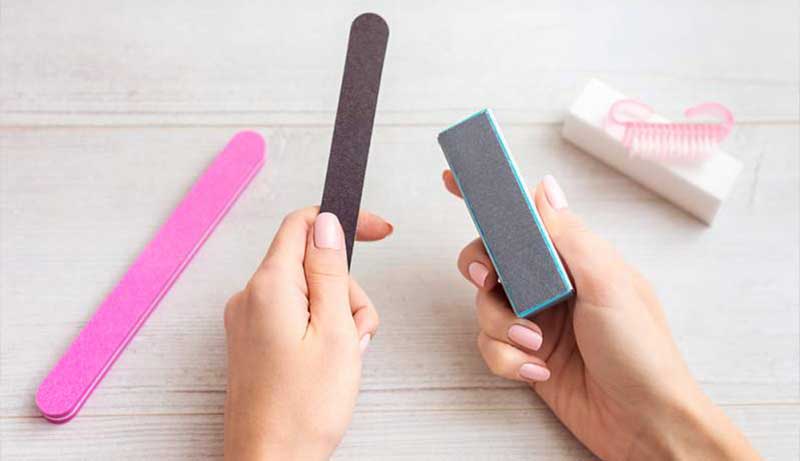There’s a saying, “to sharpen a knife is better than a dull one”. Sharpness is one of the main traits and parameters on which basis the selection of choosing a knife is mostly dependent. If the sharpness of the knife is not up to mark, then there would be no advantage of using that knife.
If your kitchen knife is mashing instead of potatoes or slipping while slicing onions or tomatoes, it’s time to sharpen the blade. Whether you’re using a manual grindstone, an electric grindstone, or know how to use a sharpener or whetstone, sharpening a knife is a skill that every home cook should learn.
Many whetting tools are available for sharpening knives. For example, nail files, whetstones, nail buffers, grit sandpaper etc. Why should a file be used to sharpen a knife? A file is the best tool for sharpening a saw blade, and a grinder is usually too wide to fit your teeth. In the instructions below, reducing the roughness of the file each time you practice the sharpening process can help create very sharp edges. You can check out our picks for Bunka Knife as well.
Benefits of sharpening a knife

A sharp knife cuts vegetables and cuts meat quickly and accurately. Storing sharp knives has two main advantages.
Safety: A sharp knife gives the most safety. A blunt knife is easy to slip and cut other things like your fingers.
Precision: Sharp knives make precise cuts. How you cut your food affects how long it takes to cook, so it’s important to cut your food into equal pieces so that it cooks at the same speed. If you are looking for the Traditional Pocket Knives, you can find the recommendations here.
Ways to sharpen a knife

Knife sharpening is the process of eliminating metal from a knife blade to make a new sharp edge. There are several ways to sharpen a knife yourself. Such as,
Manual knife sharpener: A manual knife sharpener is often known as a “pull-through grindstone,” and it is the cheapest and easiest way to care for your kitchen knives. This type of sharpener has 2 slots: abrasive coarse grains and abrasive fine grains.
Electric knife sharpener: An electric knife sharpener is similar to a portable knife sharpener with the same “curved” and “fine” grooves, but the abrasive is on a powered wheel that rotates against the blade. Such sharpeners are more powerful and accurate than manual knife sharpeners. You have to slowly and gently pull the knife through the slot to allow the powered abrasive to do its job. Then switch to the opposite side of the knife and repeat the first step and then repeat these steps for a few times. If it still does not sharpen, repeat this step until it is sharp.
Sharpening stone or Whetstone: A sharpening stone is a rectangular block with a rough side and a fine side. A sharpening stone, or grindstone, is the most effective way to sharpen a knife. Different types of sharpening stones perform the sharpening process very accurately.
Nail File
Nail file can be a good and affordable tool for whetting file knives. They have a rough and grinding side which is used to sharpen the knives. Nail files are available in huge quantities because they are very low priced and easy to carry. In fact, they are the best sharpening tool for sharpening pocket kitchen knives.
How to Sharpen a knife with a Nail File

You have a blunt or dull knife but you can’t find a knife sharpener. Go no further, this is the instructions for you here!!!.
All you need is:
- A dull knife that needs sharpening.
- A nail file. (unbroken or enliven)
- A strong firm hand.
Now that all of this is ready, we are ready to begin!!!
- Step 1
Now you need to determine the sharpness of the knife. This can be resolved by pressing the front of the clipper down (for a sharper cut to be used for planning) or up (for a blunt cut to be used to cut the neck).
- Step 2
Now that we have decided on the sharpness of the knife, we need to sharpen it. Insert the knife in the position shown, then slide it back and forth with the scissors closed or open. Now I guess you are done. It really is that simple to sharpen a knife.
Ways of precautions while sharpening knives
Sharpening knives, like cutting knives, pose a risk to your fingers, so remember the following precautions:
- Do not expose your fingers to the knife blade.
- As an extra precaution, wear kitchen gloves.
- If you are using a grindstone, hold the grindstone in place, or use a rubber mat or damp paper towel under the grindstone to secure it.
- If using a grindstone, keep the grindstone and knife away from you.
- After grinding, use a damp sponge or kitchen towel to remove any remaining metal pieces.
- Sharpen your knife every 6-12 months to keep the blade sharp.
- Use the grindstone between the grindstones or use the knife through the “fine” setting on the grindstone after each use.
Final Words

A nail file is a common household item and can be used as a knife sharpener. The nail file is rough. The nails must be sharpened, so they must be rough. The texture is similar to a knife sharpener and sharpener, so it can be used to sharpen knives.
Nail clippers can be sharpened with silver foil. In fact, this is one of the easiest ways to sharpen with tinfoil. There is no need to remove the nail clipper part. Just fold the piece of foil and start cutting with the machine.
Thus if you follow the above instructions properly, you can sharpen your knife through a nail file on your own without any hassle.
